Winter Star Party Part 2
Night three was the best night yet. The previous two nights, we had to dodge clouds and observe through “sucker holes” all night. This night, it was very clear until around 4 when it got hazy. My first set was with the Astrotrac and the T2i of the Double Cluster in Perseus. This was with the 200mm lens, f/4, ISO 800, 20 x 2 min.
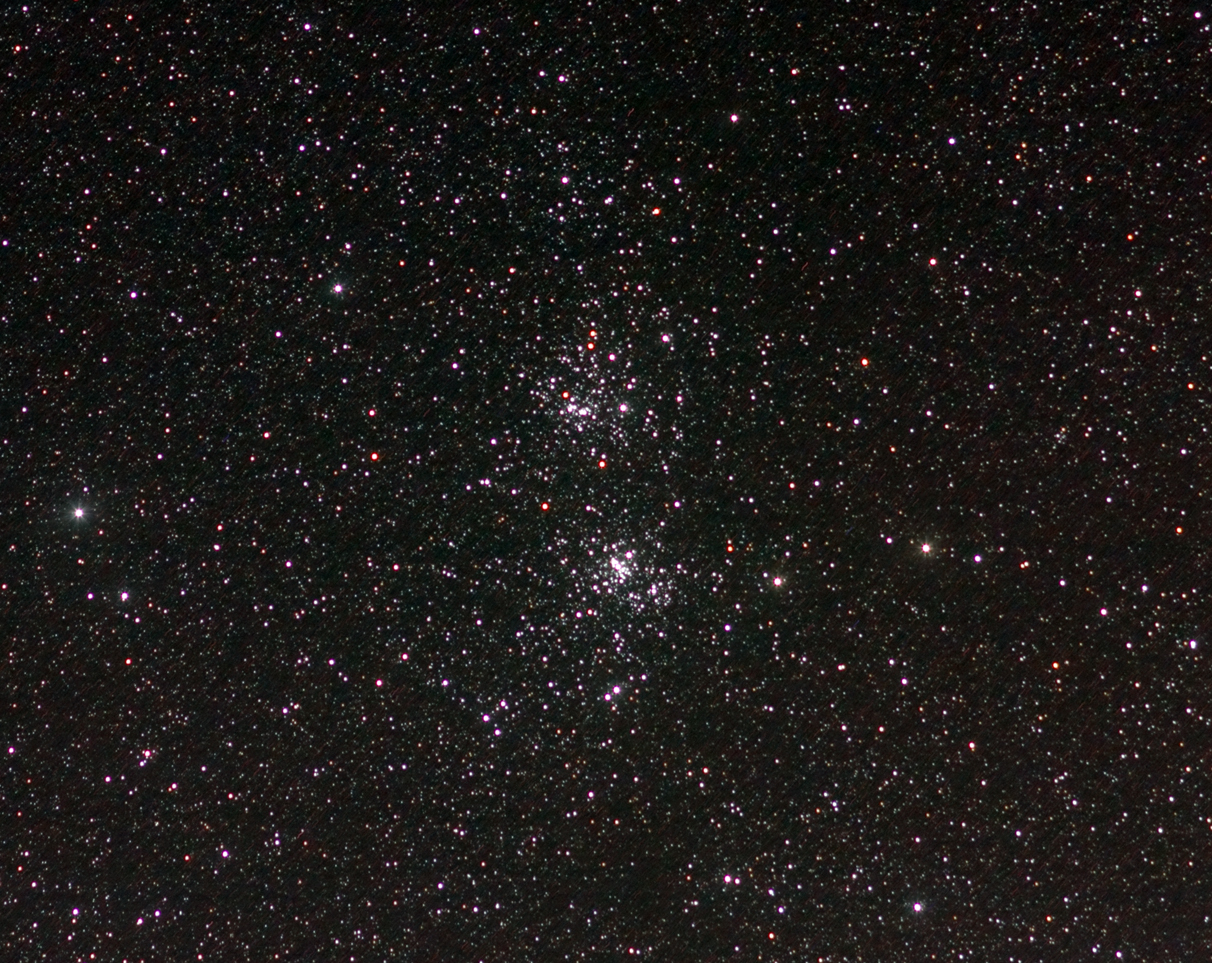
I took a few with the Astrotech refractor that night, too. The first was a series of shots of M42. I did some HDR processing here, one set to get the faint nebulosity and one to get the core near the Trapezium. The longer ones were ISO 800, 13 x 2 min. The shorter ones were ISO 800, 14 x 15 sec. Here’s the composite image, processed in Photoshop.
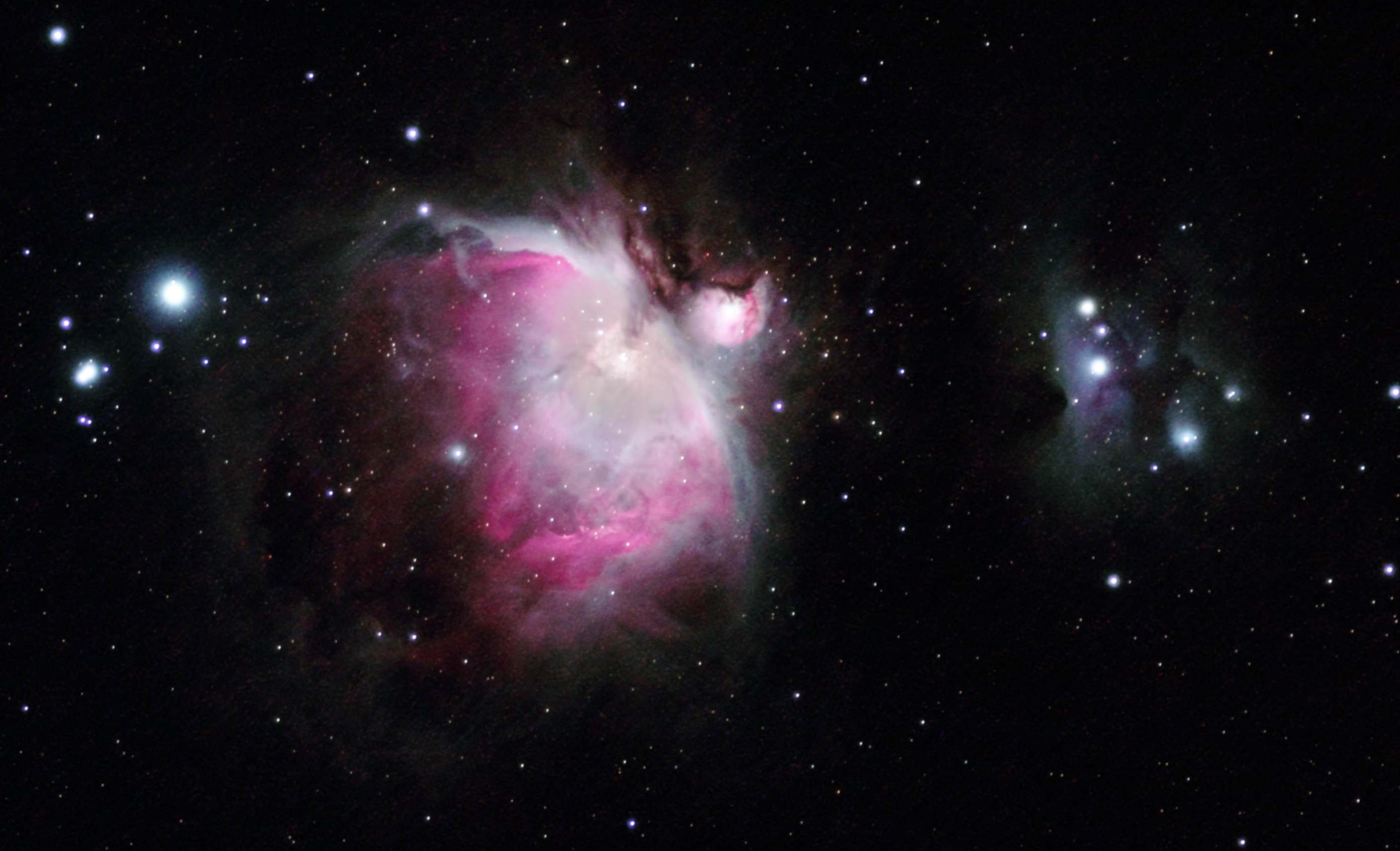
From there, I went to the Rosette nebula. This was with the Astrotech and 60DA, ISO 800, 14 x 2 min.
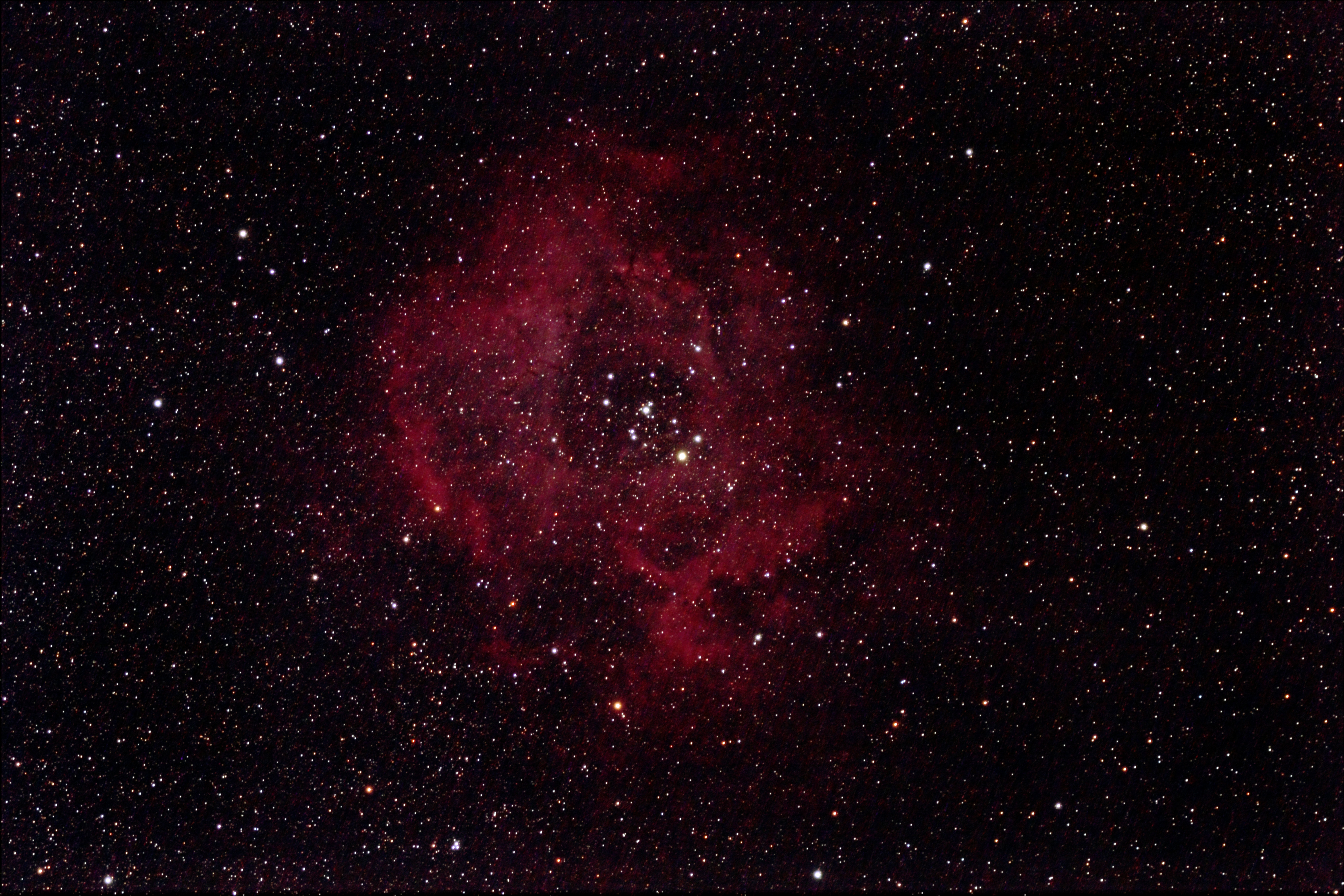
I then did IC 410, a nebula in Auriga. This was with the Astrotech and 60DA, ISO 1600, 41 x 90 sec.
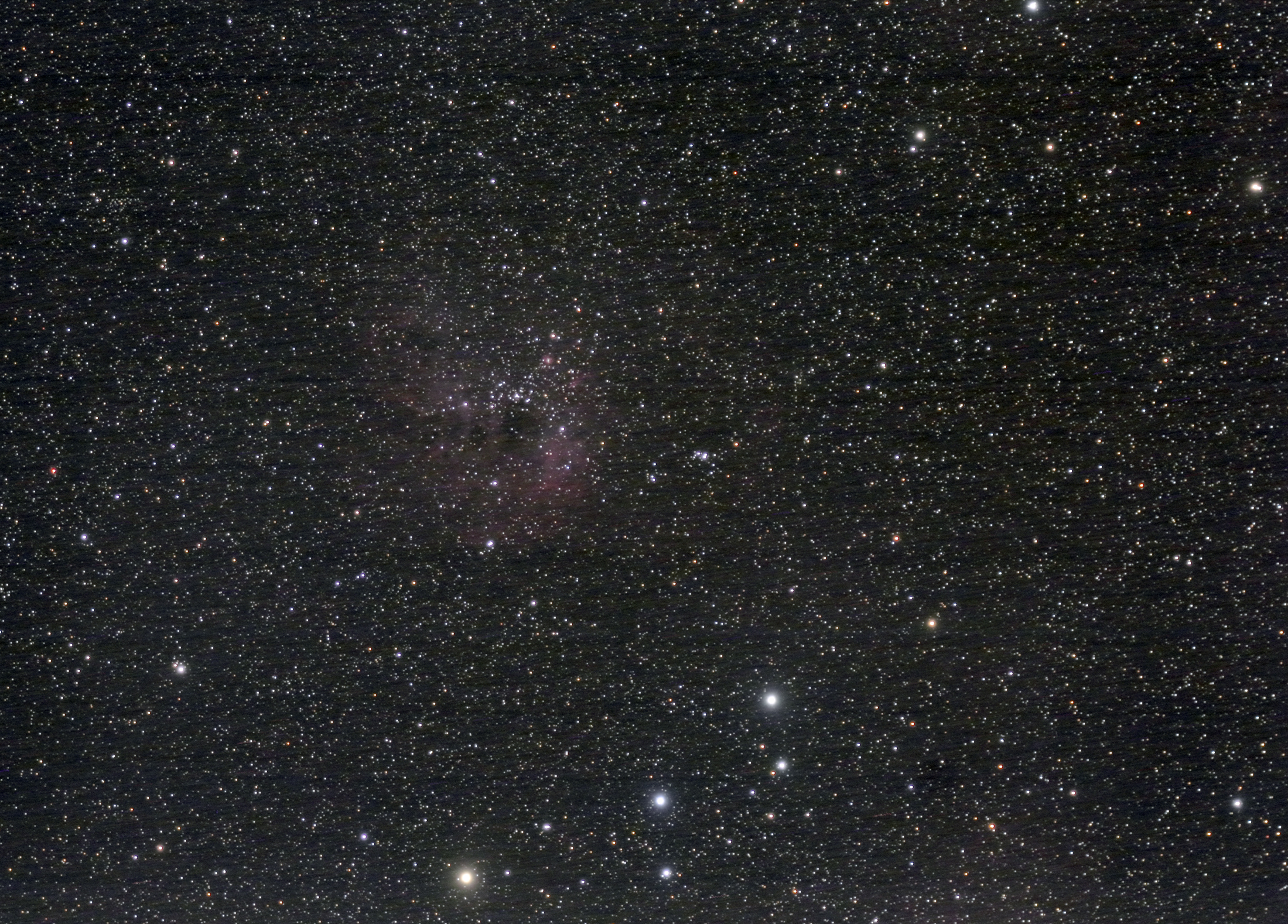
Next, I went to IC 417 also in Auriga. I positioned my field so you can see M38 as well. This was with the Astrotech and 60DA, ISO 800, 41 x 2 min.
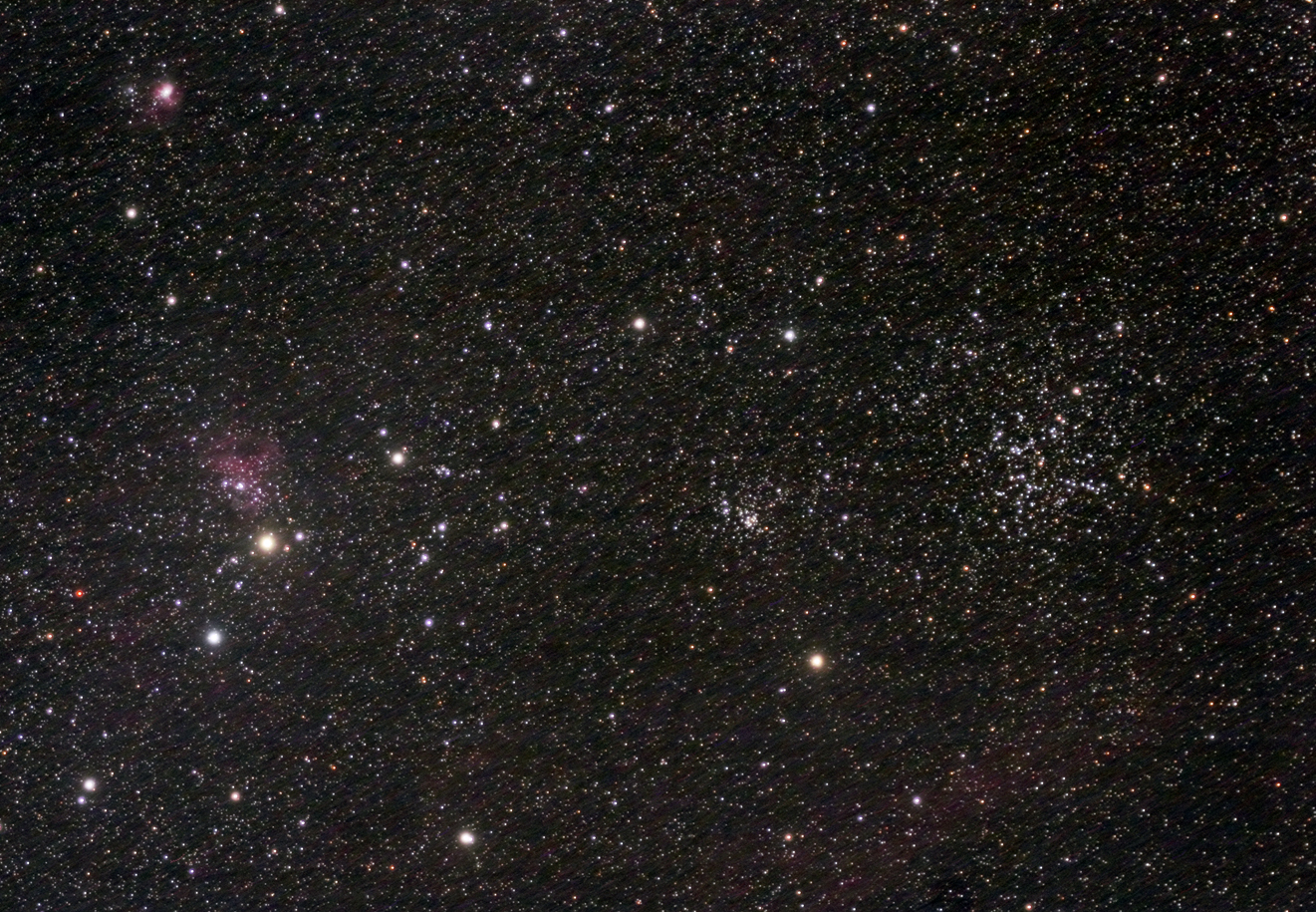
For a few hours I did some wide fields while waiting for cooler stuff to rise. One was of the constellation of Canis Major. There are parts of the Milky Way in here, but also lots of star clusters. This was with the Astrotrac and T2i, 50mm, f/4, ISO 800, 12 x 5 min.
I also did an extremely wide field of this area showing Puppis and part of Vela. This was with the Astrotrac and T2i, 16mm, f/4, ISO 800, 12 x 5 min.
Next came two things I’ve been dying to see for years. The first is the nebula Eta Carina, which rises about 9 degrees above the horizon here. I actually had to relocate my mount to see it, but we had a perfect view to the horizon over the ocean. Eta Carina is actually bigger than the Orion Nebula. I managed to see it through a 24″ scope and it was quite gorgeous. I found out about something called the Homunculus Nebula, which is apart of this area. This was with the Astrotrac and 60DA, 200mm, f/4, ISO 1600, 61 x 1 min.
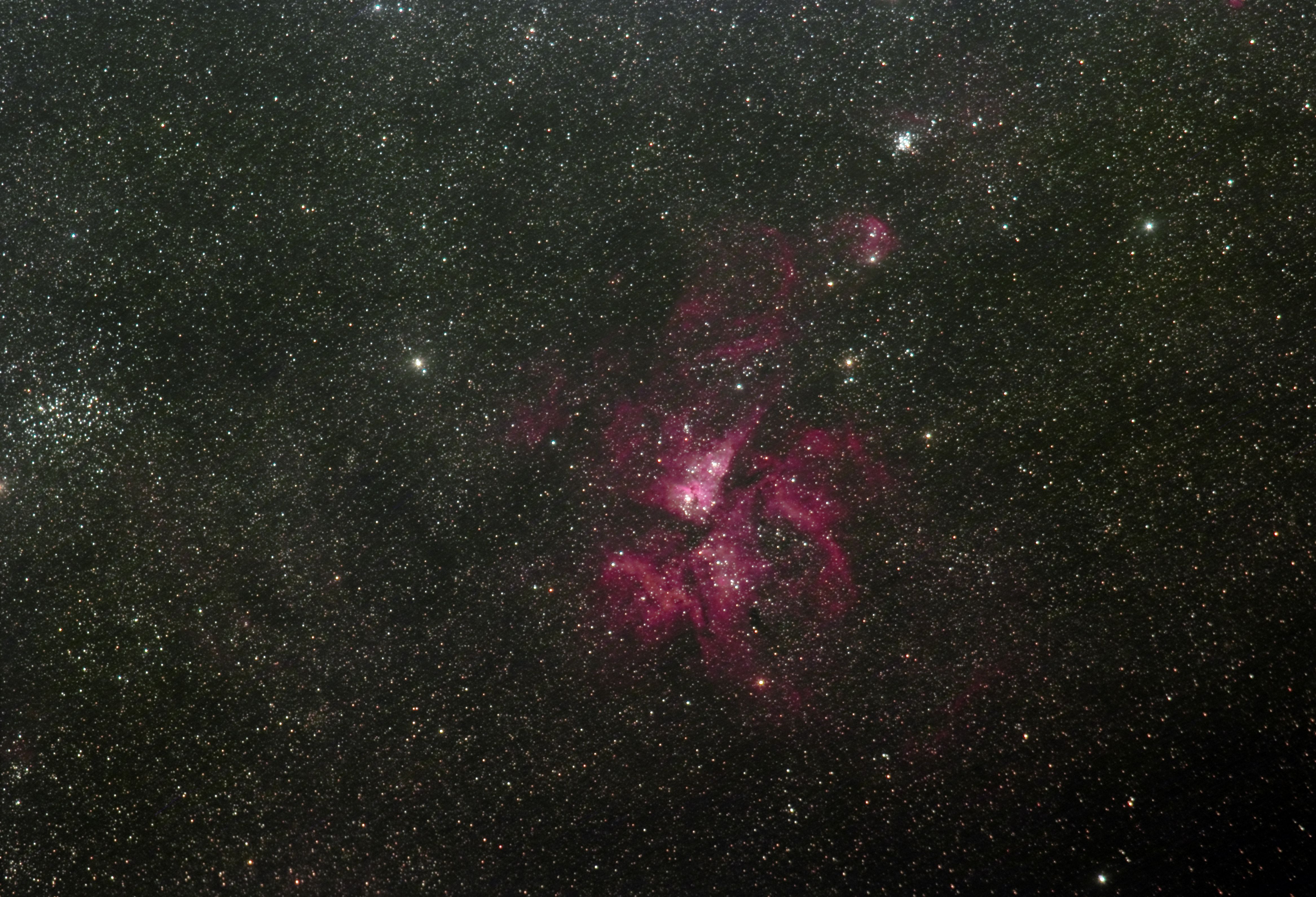
The second thing I’d been dying to see from here was the Southern Cross. I had actually seen it higher on the cruise ship, but the light pollution made it impossible to get a great image. At about 2:30 AM, it was nearly standing straight on the ocean with the bottom star barely cresting the horizon. Both the Jewel Box and the Coalsack Nebula are visible here. This was with the Astrotrac and 60DA, 50mm, f/4, ISO 1600, 10 x 5 min.
As these images were finishing up around 3 AM, I noticed that the cross was standing straight up and all four stars had a reflection in the ocean! So I snapped this image with the T2I, ISO 3200, f/4, 16mm, one 25 second image. Also visible here is Alpha Centuari, the closest star system to our own. I don’t have enough resolution here to see Proxima, the actual closest star.
The fourth evening it was nice skies for the first few hours then it clouded up. The only image I took was this wide field of the constellation Orion. Visible here is the Orion Nebula complex, the Horsehead and Flame Nebulae and also Barnard’s Loop (the red arc near the top). This was with the Astrotrac and 60DA, 200mm, f/4, ISO 800, 14 x 5 min.

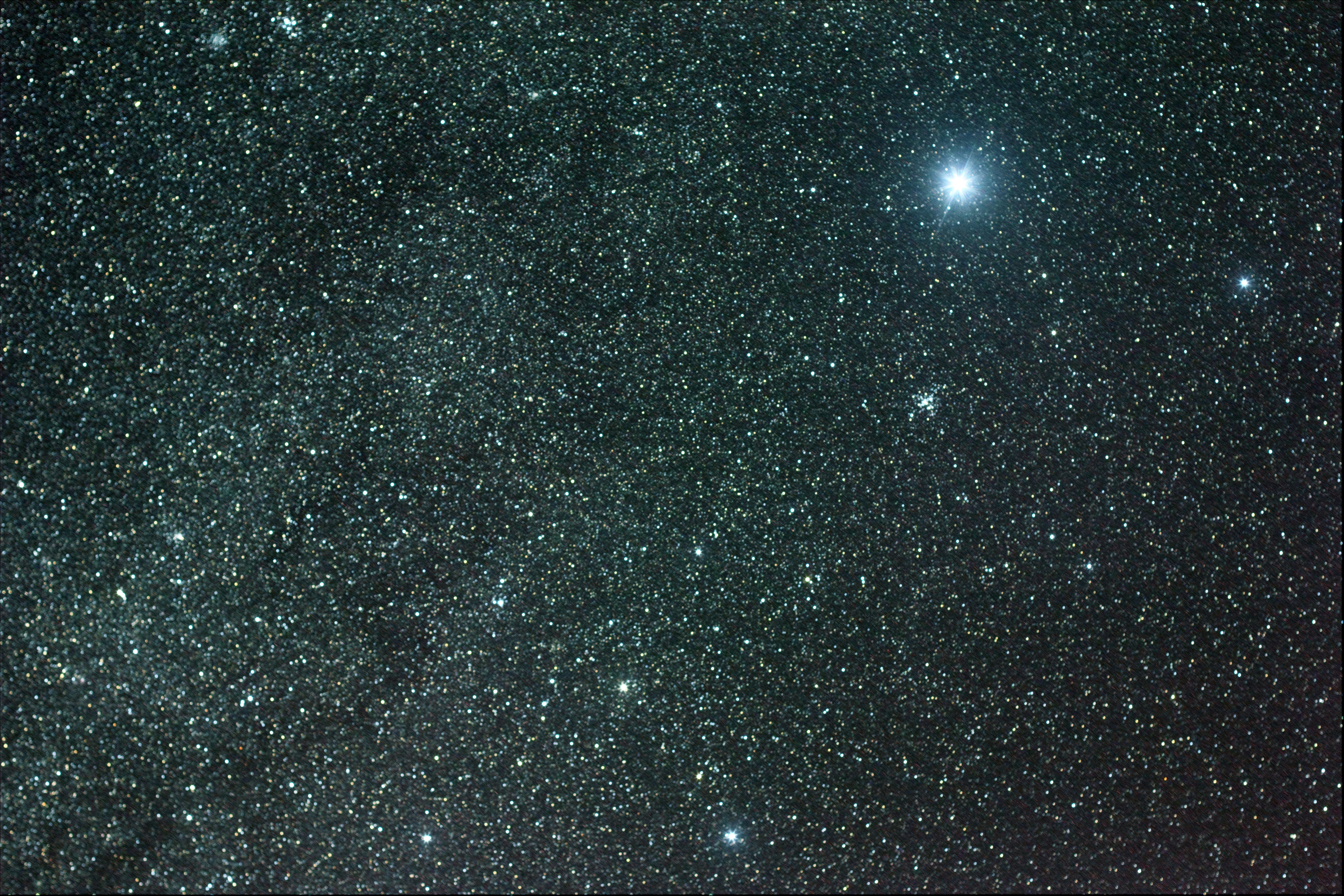
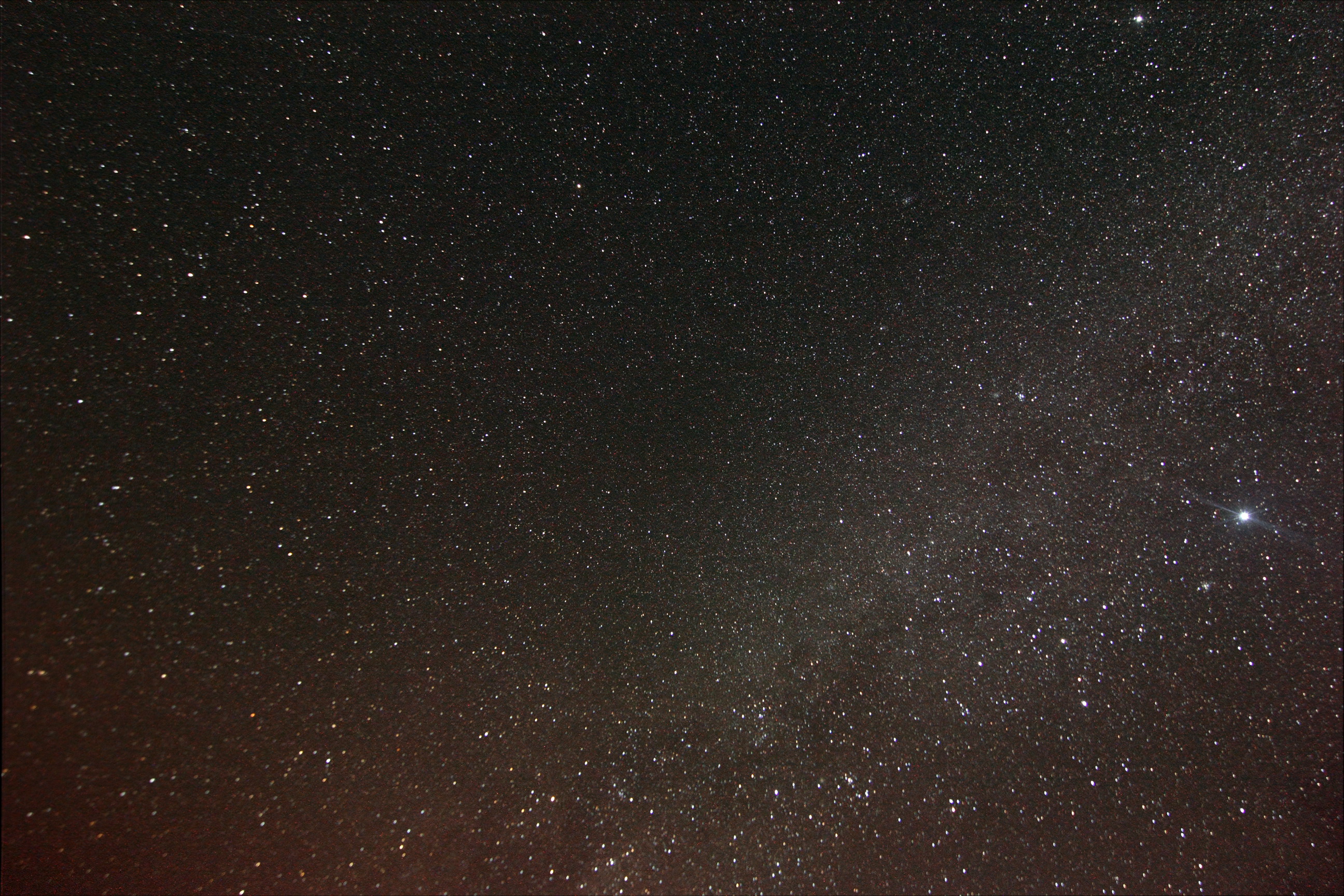
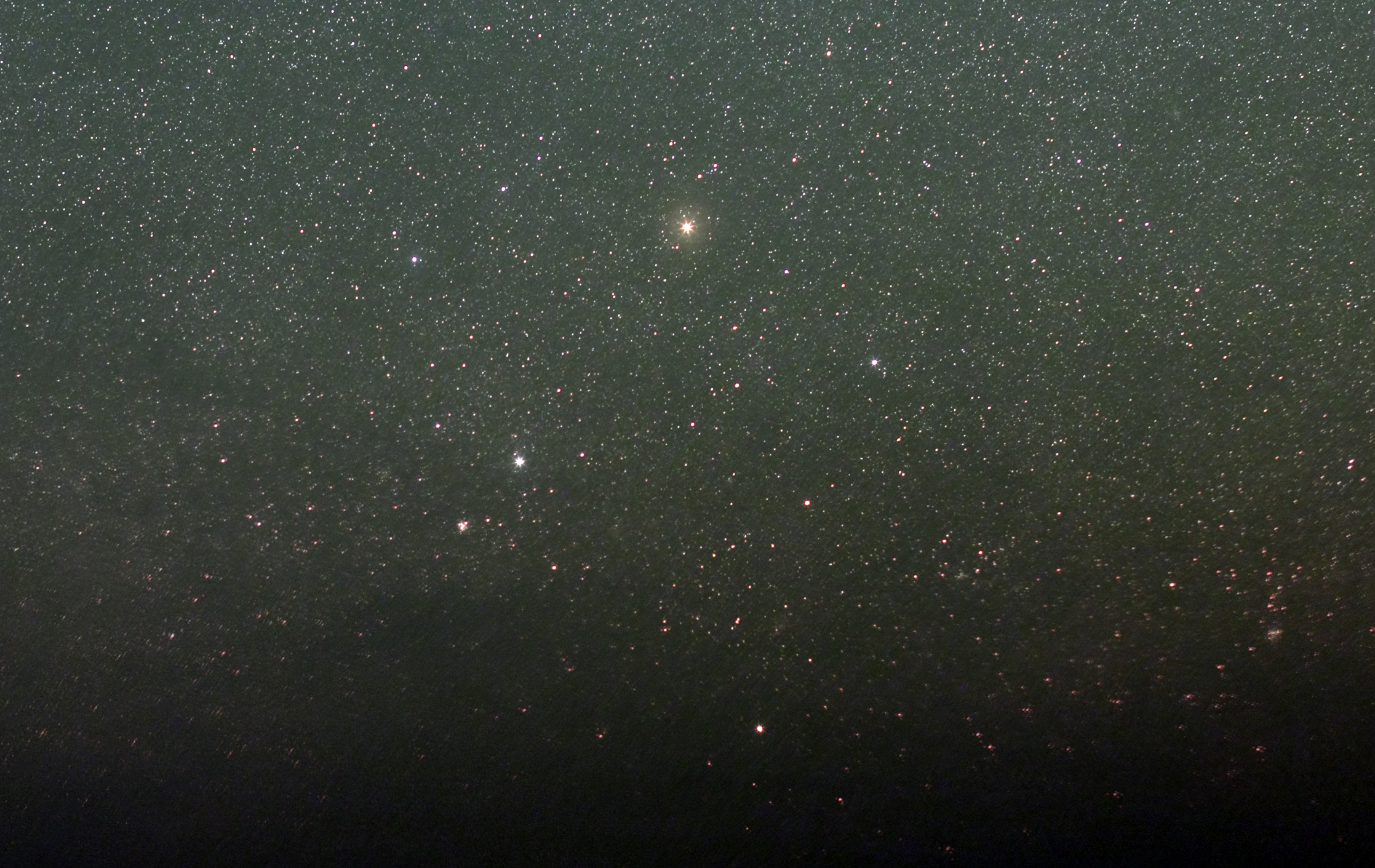
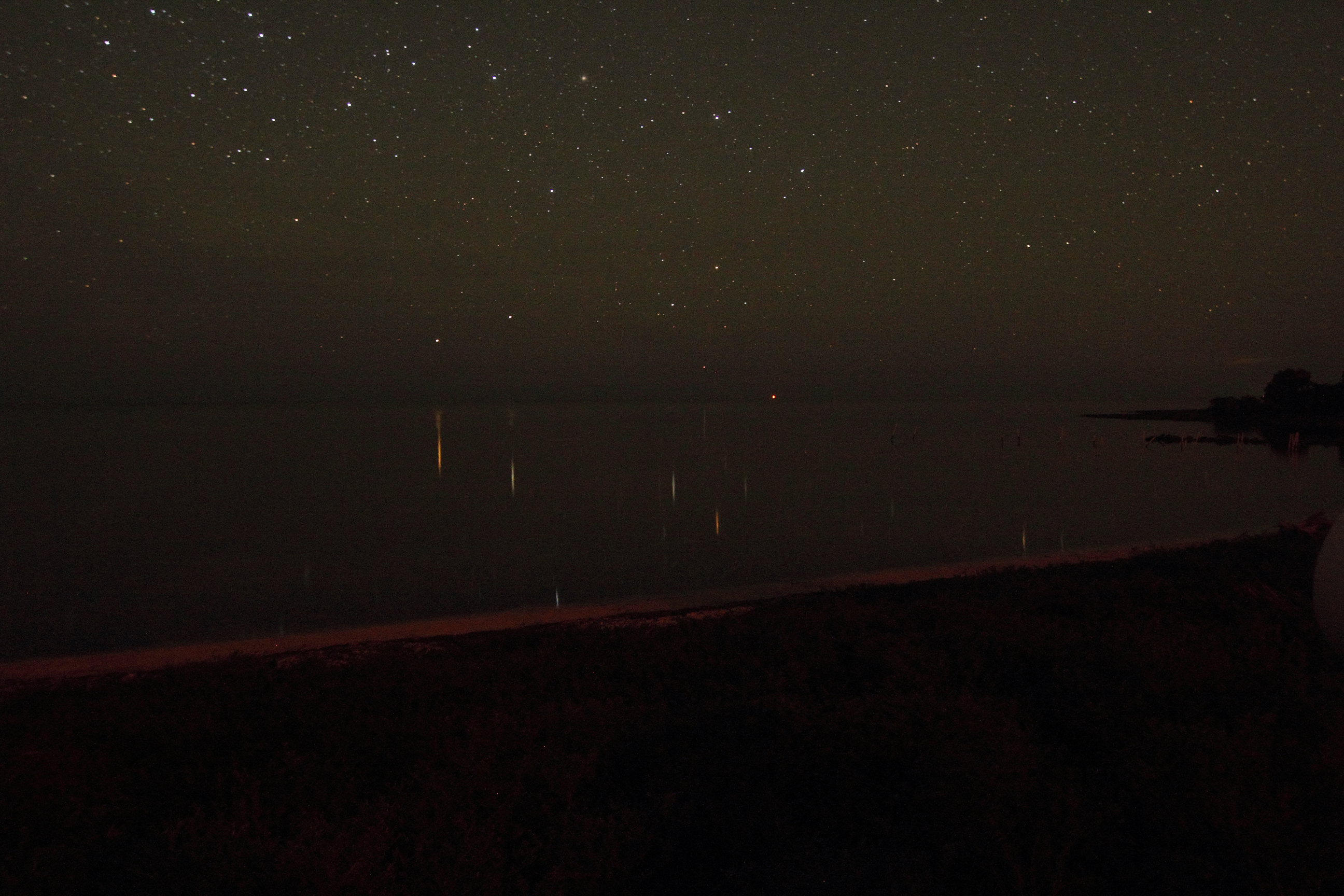
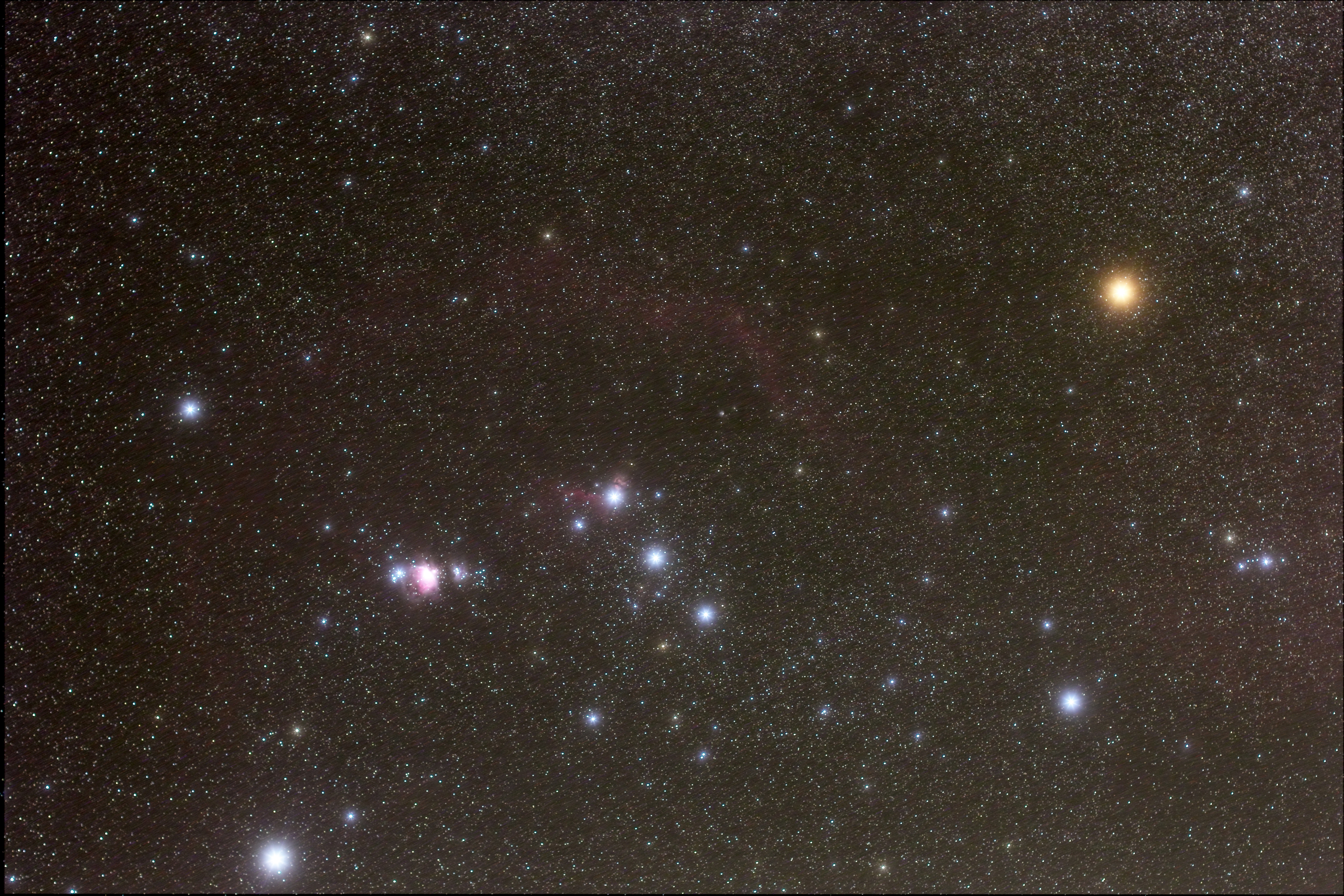
Leave a Reply